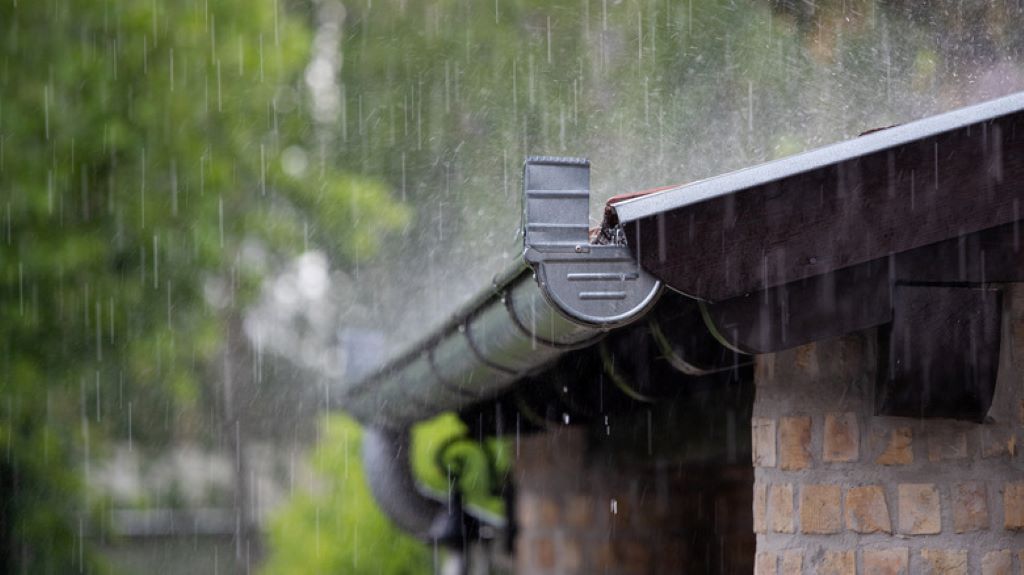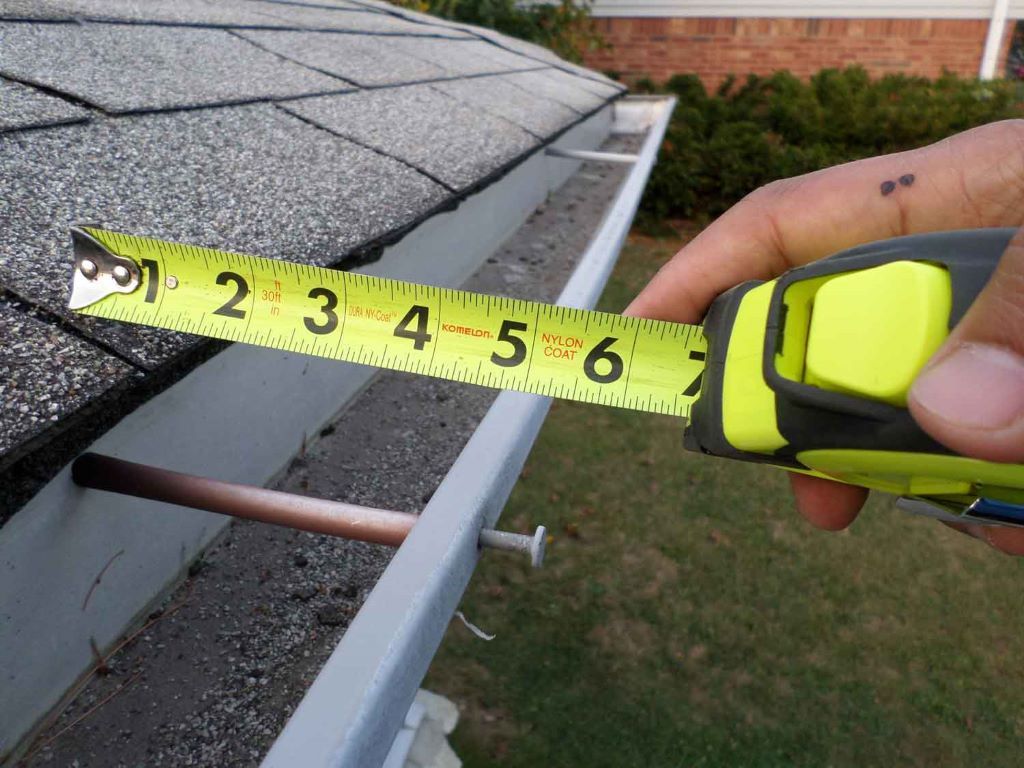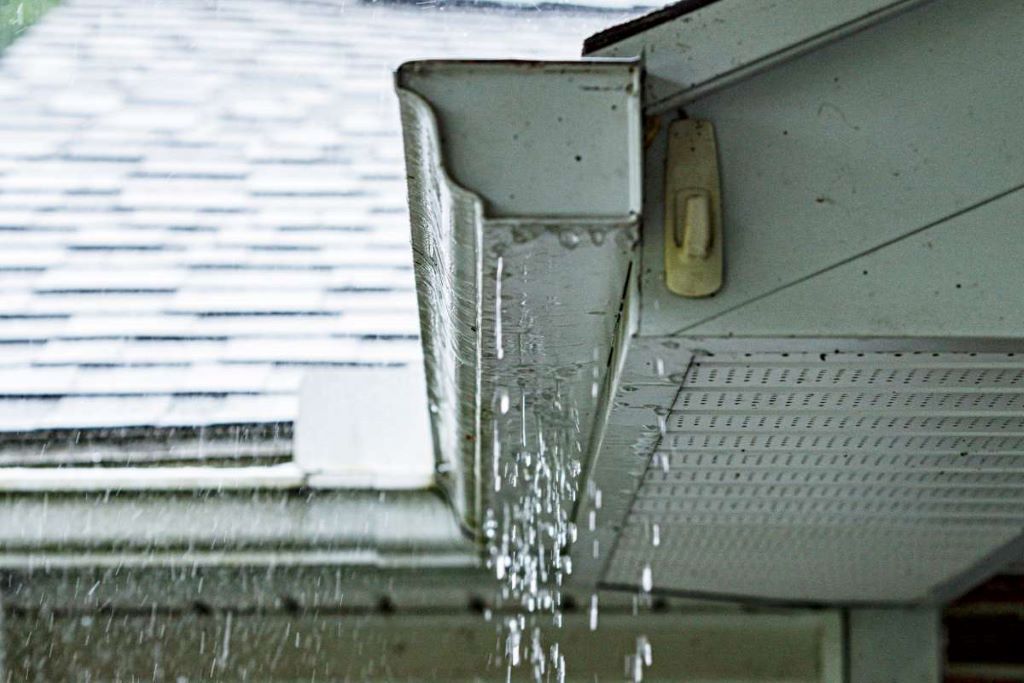Installing rain gutters is one of the best ways to protect your home from water damage. By channeling water away from your roof and foundation, gutters prevent moisture accumulation, wood rot, flooded basements, and more. But for gutters to work correctly, they need to have the proper Slope. The gutter’s slope determines how quickly water flows through it and drains off your roof. Read on to learn how to calculate and achieve the ideal Slope for rain gutters in your home.
What is Slope, and Why Does it Matter?
The Slope of a gutter refers to the angle at which it sits about the horizon. It is usually measured in inches of drop per linear foot. The Slope creates a tilted channel that uses gravity to pull water down and through the gutter system. Water can pool up and overflow without adequate Slope instead of draining properly.
The steeper the Slope, the faster the water flows. However, too much Slope can also cause issues:
- Water may run through so quickly that debris gets left behind, leading to clogs.
- Excessively angled gutters are more visible and can look unsightly.
- Steep slopes put more stress on gutter joints and increase the risk of seams and hangers failing.
The ideal Slope falls in the middle—not too flat or steep. This “Goldilocks” angle, often called the proper gutter slope, allows for efficient drainage without the drawbacks of extremes.
Determining the Optimal Gutter Slope
Many factors go into choosing the proper Slope, including roof pitch, climate, gutter materials, etc. Here are some general guidelines:
- A slope of 1/4 inch per 1 foot of gutter length is usually recommended for standard residential homes. At this moderate angle, water can flow freely without rushing through too quickly.
- Increase the Slope to 1/2 inch per 1 foot of gutter in areas with moderate to heavy rainfall. The steeper pitch will handle larger volumes of water.
- For sections of gutter that exceed 40 feet, use a minimum of 1/2 inch of drop per 10 feet to maintain flow. Long runs need more Slope.
- Choose a steep slope of 1 inch per 10 feet if you have a low-pitched roof. Low roofs accumulate more water, so gutters need ample pitch to drain quickly.
- Reduce the Slope to 1/4 inch or less per foot for steep roofs. The rapid runoff from a steep roof gains enough speed, so gutters don’t need as much angle.
- Vinyl and aluminum gutters can handle steeper slopes than wood or copper. Work with the limitations of your gutter materials.
- When in doubt, follow the gutter manufacturer’s recommendations for achieving the optimal Slope.
Measuring and Obtaining Proper Gutter Slope
Once you know the ideal Slope for your specific home and climate, it’s time to measure and adjust your gutters to achieve it. Here is a step-by-step guide:
Gather the Right Tools
You’ll need a level, tape measure, and gutter slope gauge. If a gauge isn’t available, you can use a short section of spare gutter material with markings.
Measure the Length
Determine the overall length of your gutter runs in feet. This will allow you to calculate how much drop is needed.
Find the High Points
Use your level to locate the highest points along each gutter run. These will be your starting points to measure Slope from. Mark them.
Determine Desired Drop
Calculate the drop from the high points based on the gutter length and your desired Slope (e.g., 1/4 inch per foot).
For example, if you have a 20-foot gutter that you want sloped at 1/4 inch per foot, your total drop would be 5 inches (20 feet x 0.25 inch).
Adjust the Hangers
Use a slope gauge or pre-marked gutter section to help set the angle as you adjust the gutter hangers. Space them out based on the manufacturer’s specifications.
Lowering one end of each hanger will create the tilted Slope you need.
Check for Consistent Pitch
Use your level and slope gauge at several gutter points to ensure it follows a consistent downward angle. The water should never have to flow uphill.
Direct Water to Drainage
Point your sloped gutters toward downspouts or drain outlets. This allows the water to exit efficiently.
Test and Tweak
Run water tests to observe drainage. Make minor adjustments as needed until water runs off rapidly without overflowing.
Maintaining Proper Gutter Slope Over Time
Gutters lose their ideal Slope over years of weathering and use. To keep them functioning correctly:
- Inspect them twice per year and realign hangers if the angles look off.
- When cleaning, check that the high and low points are still correct.
- If a section sags, reinforce the hangers or install new ones.
- Add slope gauges near downspouts to quickly identify problem areas.
- For older homes, consider replacing warped gutters to restore an appropriate Slope.
A proper gutter slope is essential for controlling water and protecting your home. Careful measurement, consistent angles, and occasional maintenance will keep your gutters draining effectively. Implementing and preserving the proper Slope over time is well worth the effort.
Frequently Asked Questions
What are some signs my gutters have an inadequate Slope?
Symptoms of insufficient gutter slope include water pooling in sections, gutters overflowing when it rains, moisture damage along the roofline, and gutters that require frequent unclogging due to debris buildup.
How do I increase the Slope if my existing gutters are too flat?
Carefully bend hanger straps to raise one side of the gutters, or install new hangers positioned to create more pitch. You may need to detach a section and prop it up on one end to achieve the angle you need before reattaching the hangers.
Can I slope my gutters too much? What are the risks?
Over-sloped gutters cause water to run off so quickly that debris gets left behind, leading to clogs. Excessive Slope also stresses gutter seams and increases leakage risk. Limit Slope to the manufacturer’s recommendations.
Should the Slope be consistent over the entire gutter run?
Yes, maintaining a regular slope is essential. The gutters should sit at the same angle throughout so water never has to drain uphill. Use slope gauges at multiple spots to check for consistency.
Do valleys or low points on my roof impact the gutter slope?
Valleys and low spots cause more water buildup. Compensate by increasing the gutter slope in those areas to match the additional volume. Use a steeper pitch to allow rapid drainage from valleys.
Conclusion
Determining your home’s ideal rain gutter slope involves considering factors like climate, roof pitch, and gutter materials. Measure each run, calculate proper drop, and use levels with slope gauges to consistently achieve the recommended angle. Aim for 1/4 inch of drop per foot of gutter for standard homes. Understanding how wind can damage your roof is crucial for overall home maintenance. Incorporate this knowledge with proactive measures, such as testing water flow and making adjustments, to ensure adequate drainage without overflow. Over time, preserving your gutters at the proper slope not only prevents damage and operational issues but also contributes to the longevity of your rain gutter system. This helpful guide is your key to determining and maintaining an optimal slope for effective, long-lasting rain gutters.






